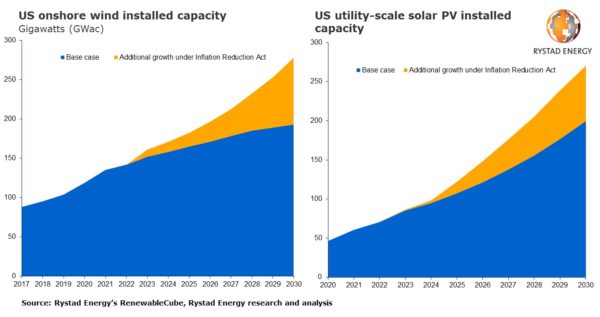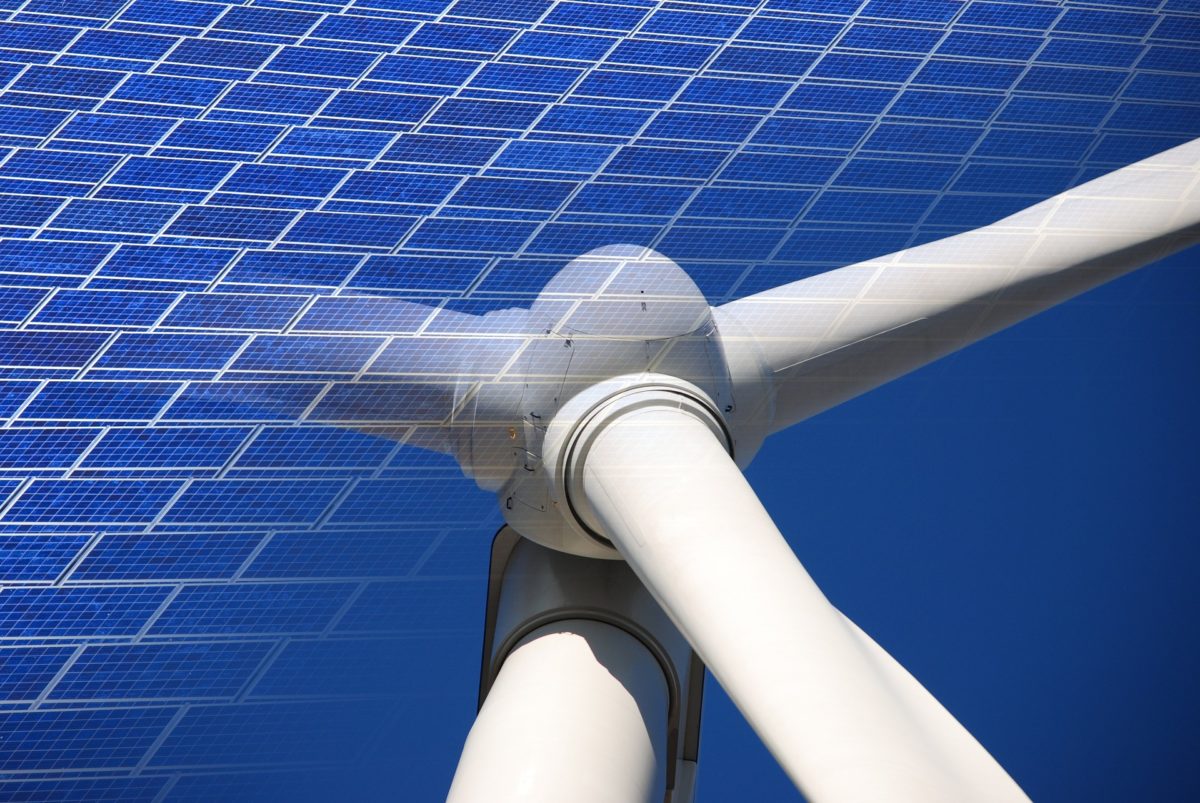Data analyst Rystad Energy is projecting that the Inflation Reduction Act (IRA) may increase the total deployments of wind and solar power by an additional 155 GW by 2030, over previous projections. In fact, Rystad’s most recent U.S. projections have been somewhat somber on solar, as they focused on polysilicon bans and investigations.
With the signing of the IRA, long term projections for solar are up. Of the 155 GW of new renewable capacity, 85 GW is expected to come from wind, and 70 GW from utility scale solar. The data analysis and consulting firm says though that the numbers will be a bit muted due to ongoing industry complexities.

The solar industry is currently digging itself out of the anti-dumping import tariff investigation that President Biden put on hold for two years while the various government departments worked through the details. However, shortly after that industry crisis was put on hold – the Uyghur Forced Labor Prevention Act required 3 GW of solar modules to be held at port.
Additionally, some of the benefits that come from the IRA are based on domestic content requirements. It will take time for the United States to ramp up manufacturing of solar panels and its supply chain, and at this point it’s mostly speculative as to whether or not we will actually hit 40 to 50GW of capacity. However, Qcells and Meyer Burger have recently announced that they will be constructing substantial new manufacturing facilities.
Rystad says that it will take until 2024 for the solar industry to really begin to ramp up and take advantage of the IRA.
The analysis group has also said that offshore wind could greatly benefit from the new law, however it cautions that there is limited supply of wind turbine installation vessels that would meet U.S. standards.
The company noted that the IRA gives utility scale developers a chance to choose between the 30% tax credit (ITC) or a per kilowatt hour Production Tax Credit (PTC). The PTC starts at 3/10th of a cent per kWh, however, if prevailing wage is used, that rate increases to 1.5¢/kWh. That rate should increase going forward, depending on inflation. The PTC runs for ten years.
The group modeled that a 250 MW solar project would benefit more from the PTC versus the ITC right up until high interest rates – 7.5% discount rate – start to bite, due to the heavy up-front costs.
This content is protected by copyright and may not be reused. If you want to cooperate with us and would like to reuse some of our content, please contact: editors@pv-magazine.com.









By submitting this form you agree to pv magazine using your data for the purposes of publishing your comment.
Your personal data will only be disclosed or otherwise transmitted to third parties for the purposes of spam filtering or if this is necessary for technical maintenance of the website. Any other transfer to third parties will not take place unless this is justified on the basis of applicable data protection regulations or if pv magazine is legally obliged to do so.
You may revoke this consent at any time with effect for the future, in which case your personal data will be deleted immediately. Otherwise, your data will be deleted if pv magazine has processed your request or the purpose of data storage is fulfilled.
Further information on data privacy can be found in our Data Protection Policy.